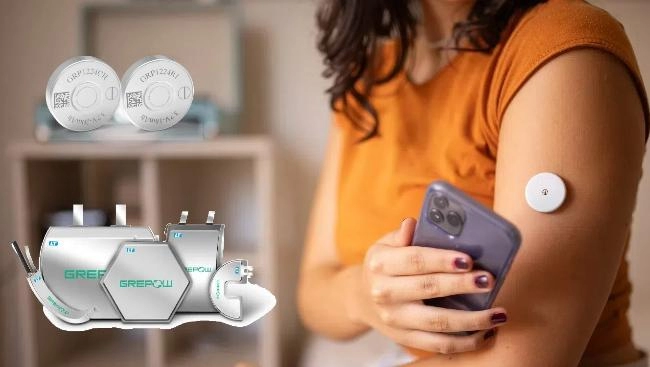Part 1. Introduction
The voltage of Lithium Polymer (LiPo) batteries is critical for determining their performance and ensuring safe usage. Like other lithium-based batteries, the nominal voltage of LiPo cells is crucial for their efficiency and safe operation.
Part 2. LiPo Battery Voltage Analysis
LiPo batteries typically have a nominal voltage of 3.7 volts per cell, similar to many lithium-ion batteries. However, depending on the configuration, LiPo batteries can also have higher voltages, such as 7.4 volts (two cells in series) or 11.1 volts (three cells in series).
The number of cells in a LiPo battery pack directly influences its voltage. A single LiPo cell typically has a voltage of 4.2V when fully charged and 3.0V when discharged. On the other hand, a 7.4V LiPo battery pack (two cells) has a voltage range of 8.4V (fully charged) to 6.0V (fully discharged).
Higher voltage batteries provide longer run times but demand more from connected components like ESCs and motors, requiring higher ratings to safely handle the increased voltage.
Therefore, it is essential to ensure that the voltage of the LiPo battery pack matches the tolerance range of the equipment being used.
Part 3. LiPo Battery Minimum Voltage
LiPo battery packs should never be discharged below certain voltage limits to avoid compromising their safety and lifespan. The minimum voltage for a LiPo cell is generally considered to be 3.0V. Discharging below this threshold can significantly affect the internal electrochemistry of the battery, leading to gradual performance degradation.
For most non-critical applications, a higher cutoff voltage of 3.2-3.3V per cell is generally recommended to reduce wear and tear while still utilizing the battery’s full capacity. This ensures that the battery maintains good performance for its intended lifespan of charge cycles. Some specialized batteries designed for maximum cycle life may require voltages to be kept above 3.5V.
Part 4. LiPo Battery Maximum Voltage
The maximum voltage of a LiPo battery is a crucial specification to consider during charging to maintain safety. While slightly overcharging can boost some performance, it significantly reduces the battery’s overall cycle life.
Model enthusiasts generally consider 4.2V to be the maximum safe voltage for each LiPo cell. For a typical 3s (11.1V) battery pack, this corresponds to 12.6V. When the voltage exceeds this value, protection circuits activate and stop charging to prevent overcharging.
Some specialized high-discharge-rate LiPo cells may be rated for slightly higher voltages, up to 4.25V per cell. These batteries require specialized chargers that must be precisely calibrated for the specific battery chemistry.
Part 5. LiPo Battery Voltage Quick Reference Chart
(Insert your chart here)
Part 6. LiPo Battery Voltage and Charging Relationship
The following points describe the relationship between LiPo battery voltage and the charging process:
- As a battery charges, the voltage per cell increases. A fully discharged 3.7V/cell LiPo battery will reach 4.2V when fully charged.
- Balancing the charging current and voltage is crucial. Applying too much current too quickly can cause overheating and damage. A slow, controlled charging process is the safest approach.
- After the charging cycle is complete, many chargers provide a lower “trickle charge” to offset voltage drops caused by internal chemical reactions within the battery.
- Modern chargers often use “Constant Current, Constant Voltage (CC/CV)” charging. During the final stages of charging, the charger switches to a constant voltage mode of 4.2V/cell to carefully monitor the voltage increase rather than pushing more current.
- As the charging rate slows, the battery enters a “cell balancing” state, where all cells are full but at risk of overcharging if charging continues.
- Monitoring the voltage is crucial for determining the battery’s state of charge. A nearly full battery might read 4.15V, while a battery at 3.8V needs significantly more time on the charger to reach full charge.
- Both undercharging and overcharging can cause long-term damage to the battery, leading to chemical imbalances. Proper voltage management ensures a correct and safe charging process.
For a deeper understanding of battery life and performance, consider exploring guides such as LiFePO4 battery lifespan for more detailed insights.
Part 7: Relationship Between LiPo Battery Voltage and Capacity
The relationship between the voltage and capacity of a LiPo battery is complex and influenced by several factors. However, some general trends can be observed.
Typically, the relationship between voltage and capacity in a LiPo battery is **non-linear**. As the battery discharges, its voltage gradually decreases. The rate at which the voltage drops depends on factors such as the applied load and the internal resistance of the battery. For most of the discharge cycle, LiPo batteries **display** a relatively flat voltage curve. The voltage remains stable until it reaches a certain point, often referred to as the “knee” of the discharge curve. After this point, the voltage starts to drop more rapidly.
While the capacity of a battery determines how long it can provide power, voltage indicates the state of charge, which fluctuates during discharge. Voltage typically decreases as the battery discharges, but the exact relationship between voltage and capacity can vary depending on factors like the load, internal resistance, and **battery chemistry**.
Part 8: Impact of LiPo Battery Voltage on Battery Life
LiPo battery voltage plays a significant role in its overall performance and lifespan. Ensuring that the voltage remains within the battery’s safe operating range is crucial for optimizing energy output and maintaining battery health.
- Overcharging (Excessive Voltage): Charging the battery beyond its safe voltage limit can **damage the battery**, leading to issues such as swelling or thermal runaway. The charging voltage for LiPo batteries should never exceed 4.2V per cell.
- Prolonged undercharging can decrease battery capacity.
- Discharging Below Minimum Voltage: Allowing the voltage to drop below 3.0V per cell can **damage the electrolyte**, leading to increased internal resistance. This negatively impacts performance and shortens the battery’s lifespan.
- Improper Storage Voltage: Storing LiPo batteries fully charged or deeply discharged for extended periods can damage them.
- Cell Voltage Imbalance: Within a single LiPo battery pack, the voltage of each cell should remain within 0.1V of each other. Larger voltage imbalances can reduce the battery’s overall capacity and, in extreme cases, lead to permanent damage or thermal runaway. Regular balance charging is recommended to maintain cell balance.
Part 9: Monitoring LiPo Battery Voltage
There are several methods and tools available for monitoring the voltage of LiPo batteries. Here are some commonly used options:
- LiPo Voltage Checker: This is a small, portable device specifically designed to measure the voltage of LiPo batteries. It connects directly to the balance connector and displays the individual cell voltages and the total pack voltage. Some models also have additional features such as low voltage alarms and capacity checking.
- Multimeter: A multimeter is a versatile tool that can measure various electrical parameters, including voltage. To use a multimeter, set it to the appropriate DC voltage range and connect the red (positive) probe to the positive terminal of the battery and the black (negative) probe to the negative terminal. This allows you to measure the battery pack’s total voltage.
- Battery Voltage Alarm: These are small devices that connect to the balance connector of a LiPo battery. They feature an LED display and a buzzer that activates when the voltage drops below a preset threshold. These alarms alert you when the battery requires charging.
- Flight Controller/Power Distribution Board: For users utilizing LiPo batteries in drone setups, flight controllers or power distribution boards can be used to monitor voltage during flight. These components can provide real-time voltage data and alert the user to low voltage situations.
Part 10: LiPo Battery Applications Based on Voltage Configuration
The voltage of lithium polymer (LiPo) batteries plays a crucial role in determining power output and capacity, directly influencing their compatibility with various applications.
Due to their higher power and energy density, higher voltage LiPo battery configurations are ideal for high-performance devices like RC cars and drones. These batteries provide the voltage necessary to meet the demands of such devices, ensuring optimal performance.
On the other hand, lower voltage LiPo batteries are better suited for smaller devices such as smartphones or portable electronics. These devices require less power, and lower voltage battery configurations help maintain an efficient and compact energy supply without sacrificing functionality.
Related Tags:
- Ufine
- Electronic Engineering Writer
More Articles
- How to Safely Clean Corroded Battery Terminals: A Step-by-Step Guide
This comprehensive guide walks you through the risks, safety tips, and proper methods for safely cleaning battery terminals affected by corrosion. - Portable Battery Charger vs Power Bank: What’s the Difference?
Portable battery chargers recharge devices on-the-go, while power banks store energy to charge devices without a direct power source. - The Ultimate Guide to Using a Lithium-Ion Jump Starter
This guide is your go-to resource for automotive emergencies, covering usage, safety measures, maintenance, and why a lithium-ion jump starter is a smart investment. - What is a Portable Battery Charger?
Portable battery chargers ensure your devices stay powered wherever you are. This guide offers a simple overview of how they work and the materials used. - How to Choose the Right Battery Pack for Your Needs: Capacity, Performance, and More
Selecting the right battery pack is crucial for reliability and performance. This guide provides insights on capacity, safety, and key factors to consider when making your choice.








